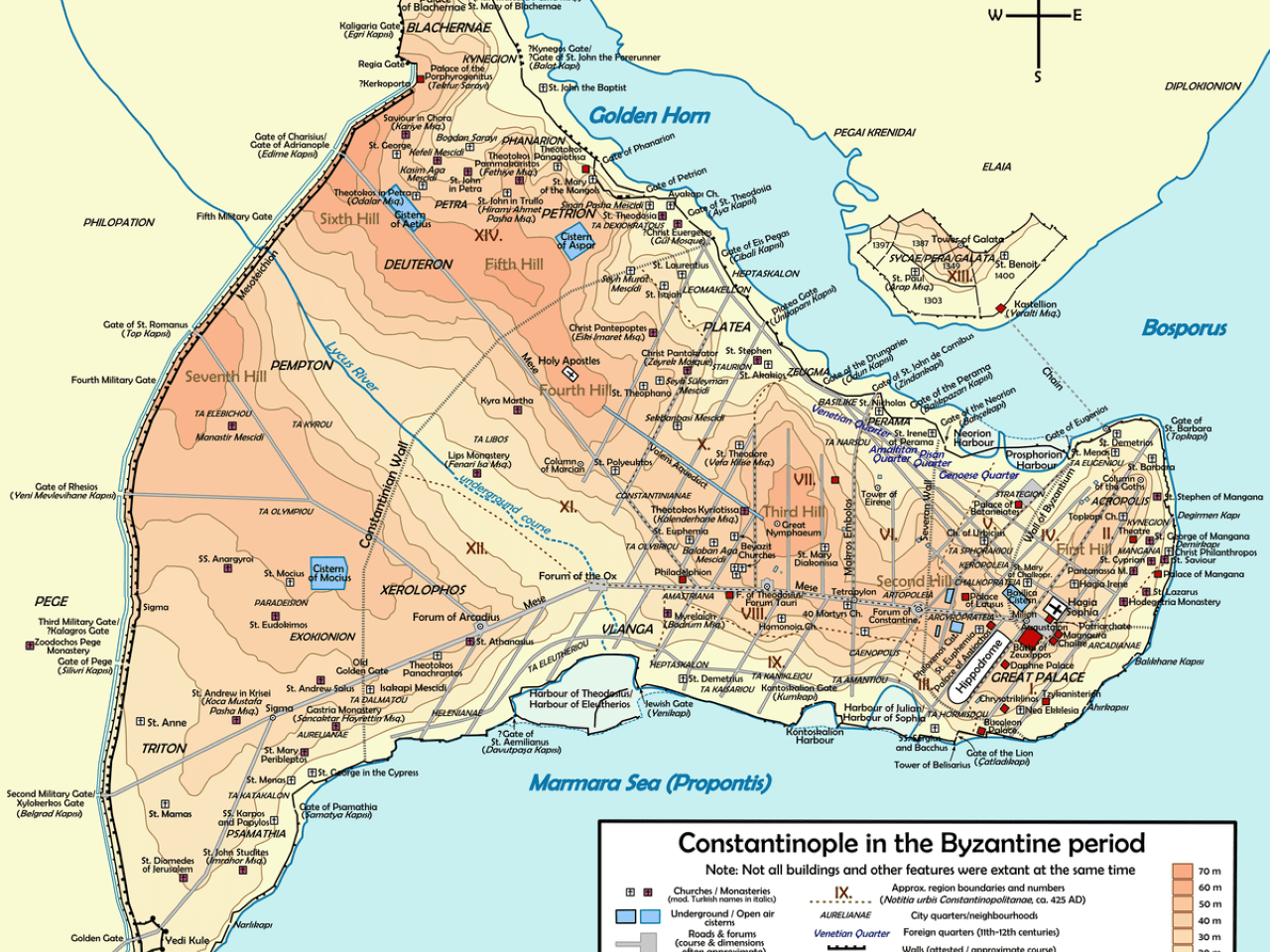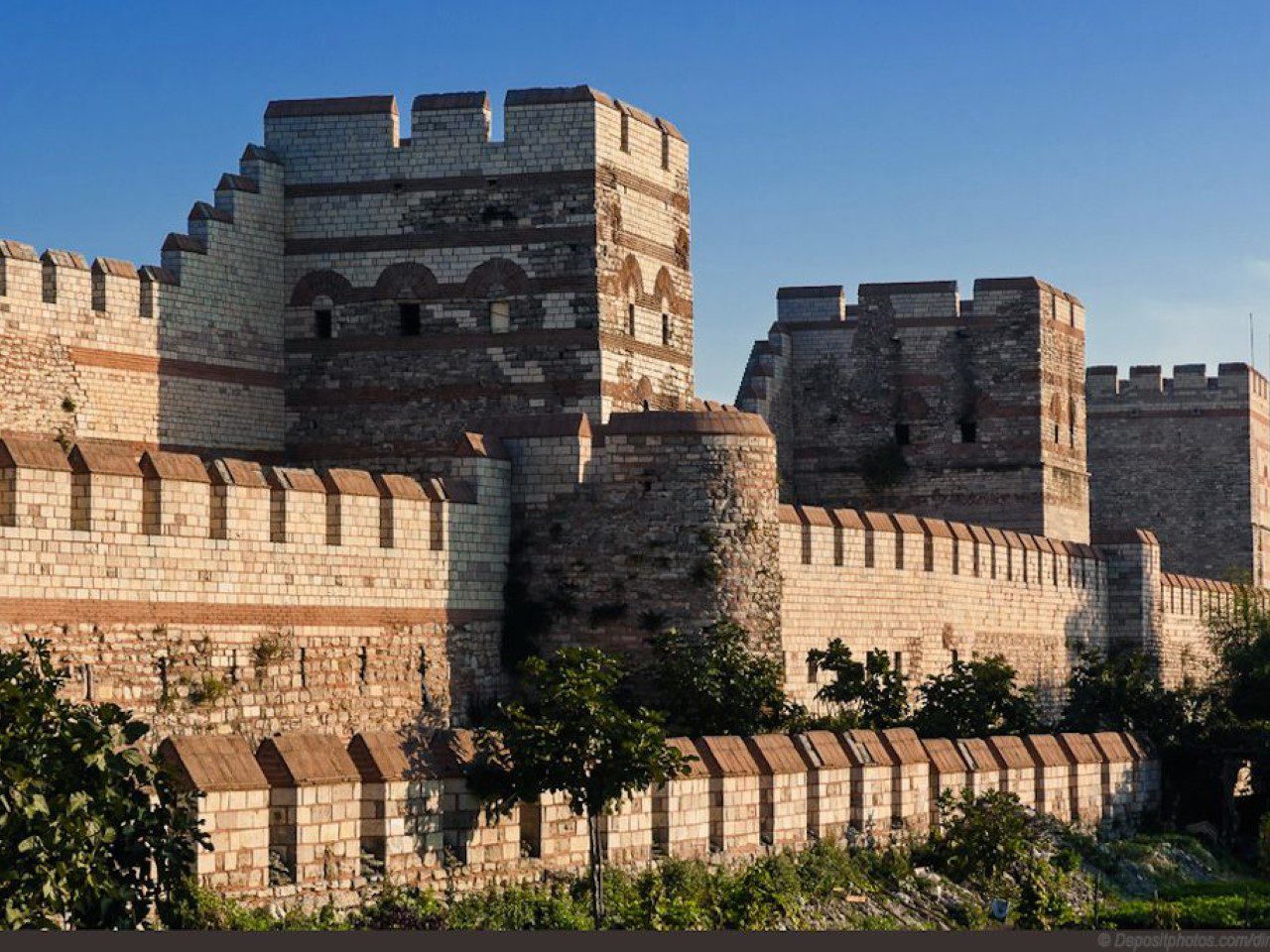Welcome to Istanbul, a historic city renowned for its remarkable architectural wonders. Among its many iconic landmarks, the Istanbul Byzantine City Walls stand tall as a testament to the glorious past of this vibrant metropolis. These ancient fortifications, also known as the Walls of Constantinople, have witnessed the rise and fall of empires, withstood numerous sieges, and safeguarded the heart of Byzantium. In this article, we will delve into the rich history and significance of Istanbul’s Byzantine City Walls, exploring their various sections, key features, and the remarkable stories they hold.
Introduction
The Istanbul City Walls, also known as the Walls of Constantinople, encircle the historical peninsula of Istanbul, spanning approximately 6.5 kilometers. Erected during the reign of Emperor Constantine the Great in the 4th century, these formidable fortifications were constructed to protect the city from external threats and played a crucial role in defending Byzantium throughout its history.
Over the centuries, successive emperors fortified, expanded, and strengthened the walls, ultimately becoming an impregnable defense system against invading forces. Today, the Istanbul City Walls stand as a living testament to the engineering marvels of the Byzantine Empire and provide a captivating glimpse into the city’s glorious past.

The Walls of Constantinople: A Brief Overview
The Walls of Constantinople, considered one of the most incredible defensive structures of the ancient world, were constructed using innovative architectural techniques and military engineering prowess. They consisted of a triple-layered defense system, comprising an inner wall, a middle wall, and an outer wall, with numerous towers, gates, and moats that enhanced their defensive capabilities.
The innermost wall, known as the Theodosian Walls, was built by Emperor Theodosius II in the 5th century. It served as the primary line of defense. It featured imposing towers and gateways, including the renowned Golden Gate, Xylokerkos Gate, Gate of Spring, Gate of Rhesios, and Gate of Charisius.
The middle wall, known as the Constantinian Wall, was erected by Emperor Constantine the Great and provided additional protection to the city. It stood slightly lower than the inner wall and was flanked by its gates and towers.
The outer wall, known as the Anastasian Wall, was constructed by Emperor Anastasius I and added an extra layer of defense. Although much of the Anastasian Wall is now in ruins, its remnants are a testament to the comprehensive fortification system that once surrounded the city.
The Sections and Features of the Istanbul City Walls
The Istanbul City Walls can be divided into sections, each with unique features and historical significance. Let’s explore some of the special sections:
1. The Theodosian Walls: This section comprises the innermost wall and includes the impressive Golden Gate, which served as a monumental entrance to the city. The Xylokerkos Gate, the Gate of
Spring, Gate of Rhesios, and Gate of Charisius are also part of this section, each bearing particular historical and architectural importance.
2. The Constantinian Wall: As the middle wall, it runs parallel to the Theodosian Walls and features several towers and gateways. Notable gates include the Gate of St. Romanus, the Gate of Adrianople, and the Gate of Charisius.
3. The Anastasian Wall: Although much of this outer wall is in ruins, remnants can still be seen in certain areas. The section between the Topkapi Gate and Silivrikapi Gate is among the most well-preserved sections of the Anastasian Wall.

The Historical Significance of the Walls
The Istanbul City Walls hold immense historical significance, not only for Istanbul but also for the broader narrative of the Byzantine Empire. These fortifications served as a symbol of the city’s resilience. They played a pivotal role in repelling numerous sieges throughout history.
One of the most famous instances was the Siege of Constantinople in 1453, when the Ottoman forces, led by Sultan Mehmet the Conqueror, breached the walls and captured the city, marking the end of the Byzantine Empire. This event marked a pivotal moment in history, ultimately leading to the establishment of the Ottoman Empire.
Furthermore, the Istanbul Byzantine City Walls witnessed the passage of armies, the emperors’ triumphs, and the people’s struggles. They stood tall against countless invasions, including attacks from various European, Persian, and Arab forces, highlighting their strategic importance and formidable defensive capabilities.
Exploring the Landmarks Along the Walls
Walking along the Istanbul City Walls is a fascinating journey that unveils a plethora of historical landmarks and architectural gems. As you traverse the walls, you will encounter magnificent gates, towers, and remnants of the fortifications.
Some of the must-visit landmarks along the walls include the Golden Gate, which once served as a grand entrance to the city; the impressive Yedikule Fortress, also known as the Fortress of the Seven Towers; and the Chora Church, now a museum renowned for its exquisite Byzantine mosaics and frescoes.
Exploring these landmarks provides a unique opportunity to immerse yourself in Istanbul’s rich heritage and witness the grandeur of the Byzantine Empire.

Preservation Efforts and Restoration Projects
Recognizing the historical and cultural value of the Istanbul Byzantine City Walls, efforts have been made to preserve and restore these ancient fortifications. Restoration projects have been undertaken to safeguard the remaining sections of the walls and ensure their longevity for future generations.
The restoration projects encompass not only the physical structures but also the surrounding areas, creating spaces for locals and visitors to appreciate the historical significance of these walls. Additionally, informative signboards and guided tours help to provide a deeper understanding of the historical context and architectural marvels.

Conclusion
The Istanbul City Walls stand as a remarkable testament to the glorious past of Byzantium and the city’s resilience against countless invasions. These awe-inspiring fortifications, comprising the Theodosian Walls, Constantinian Wall, and Anastasian Wall, continue to captivate visitors with their architectural grandeur and historical significance.
Walking along the Istanbul City Walls is a journey through time, allowing you to connect with the rich heritage of this magnificent city and experience the stories engraved within the stones. From the iconic gates to the remnants of the fortifications, each step unravels a new layer of history and unveils the ingenuity of ancient defensive systems.
Preservation efforts and restoration projects ensure that these remarkable structures endure, providing a window into the past and allowing future generations to appreciate the grandeur of the Byzantine Empire. Exploring the Istanbul City Walls is an unmissable experience for history enthusiasts, offering a profound connection to the heart of Istanbul’s storied past.
Istanbul City Walls FAQs:
What are the main attractions of the Istanbul City Walls?
The Istanbul City Walls encompass several remarkable attractions, including the Golden Gate, Yedikule Fortress, and the Chora Church. These landmarks offer a glimpse into the city's historical significance and architectural splendor.
Can you walk along the Istanbul City Walls?
Walking along the Istanbul City Walls is a popular activity among visitors. It allows you to explore the historical fortifications, enjoy panoramic city views, and discover hidden gems.
Are guided tours available for the Istanbul City Walls?
Yes, guided tours are available for the Istanbul City Walls. These tours provide insightful commentary, historical context, and a deeper understanding of the fortifications and their significance.
How long does walking the entire Istanbul City Walls take?
The time to walk the entire length of the Istanbul City Walls can vary depending on your pace and the number of stops you make. On average, it takes approximately 3-4 hours to complete the entire circuit.
5. Are there any restoration projects underway for the Istanbul City Walls?
Restoration projects are underway to preserve and restore the Istanbul City Walls. These projects aim to protect historic structures and ensure their longevity, allowing future generations to appreciate their cultural and historical significance.



0 Comment